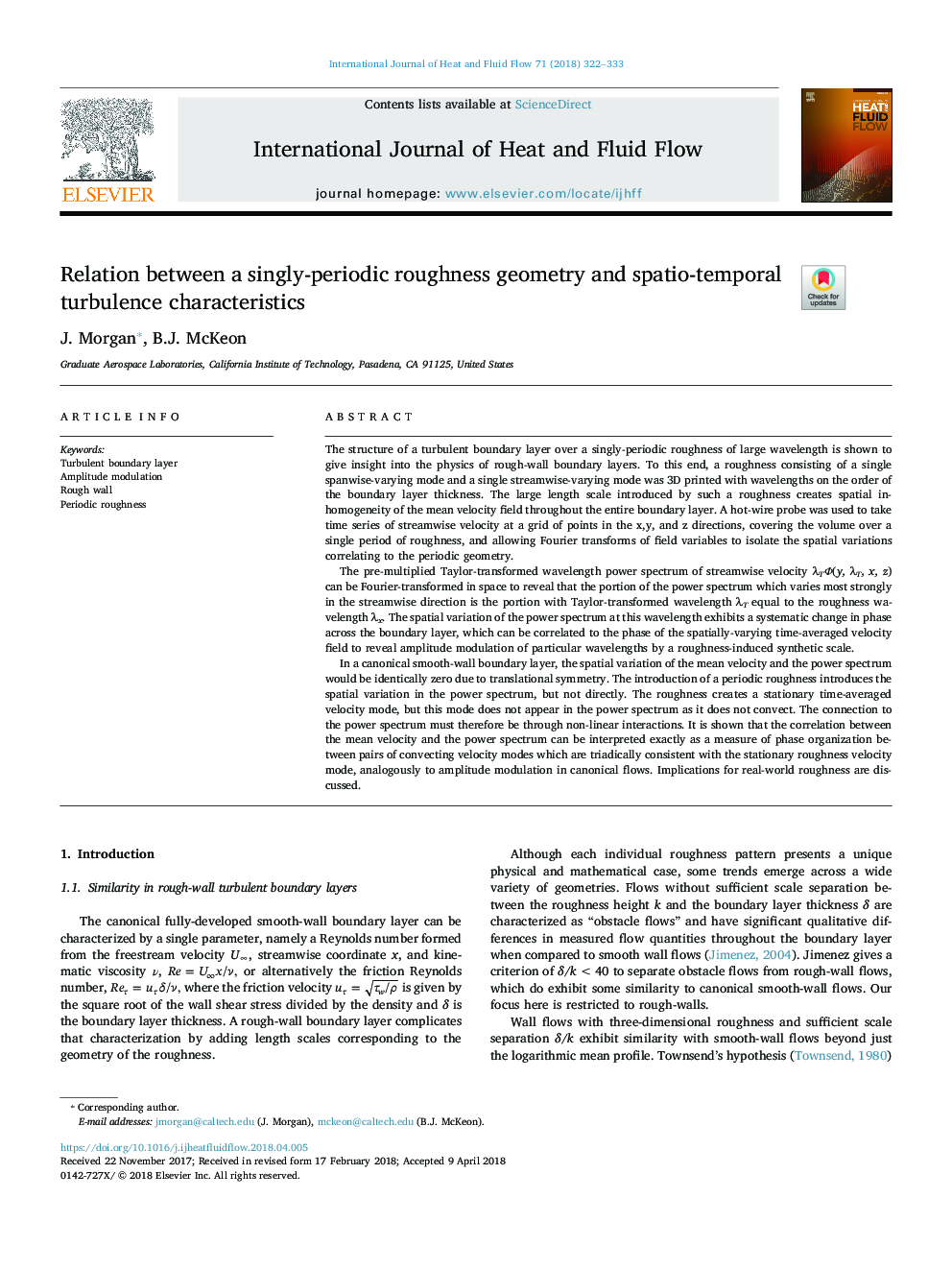| Article ID | Journal | Published Year | Pages | File Type |
|---|---|---|---|---|
| 7053485 | International Journal of Heat and Fluid Flow | 2018 | 12 Pages |
Abstract
In a canonical smooth-wall boundary layer, the spatial variation of the mean velocity and the power spectrum would be identically zero due to translational symmetry. The introduction of a periodic roughness introduces the spatial variation in the power spectrum, but not directly. The roughness creates a stationary time-averaged velocity mode, but this mode does not appear in the power spectrum as it does not convect. The connection to the power spectrum must therefore be through non-linear interactions. It is shown that the correlation between the mean velocity and the power spectrum can be interpreted exactly as a measure of phase organization between pairs of convecting velocity modes which are triadically consistent with the stationary roughness velocity mode, analogously to amplitude modulation in canonical flows. Implications for real-world roughness are discussed.
Related Topics
Physical Sciences and Engineering
Chemical Engineering
Fluid Flow and Transfer Processes
Authors
J. Morgan, B.J. McKeon,
